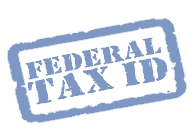Women’s Health and Cancer Rights Act
 The Women’s Health and Cancer Rights Act was a major turning point for women suffering from breast cancer and other cancers that require mastectomies. Under this Act, there are protections for patients who elect breast reconstruction in connection with a mastectomy. For plan participants and beneficiaries receiving benefits in connection with a mastectomy, plans offering coverage for a mastectomy must also cover reconstructive surgery and other benefits related to a mastectomy.
The Women’s Health and Cancer Rights Act was a major turning point for women suffering from breast cancer and other cancers that require mastectomies. Under this Act, there are protections for patients who elect breast reconstruction in connection with a mastectomy. For plan participants and beneficiaries receiving benefits in connection with a mastectomy, plans offering coverage for a mastectomy must also cover reconstructive surgery and other benefits related to a mastectomy.
Who does it apply to?
- Group health plans for plan years starting on or after October 21, 1998
- Group health plans, health insurance companies or HMOs, if the plan or coverage provides medical and surgical benefits with respect to a mastectomy
- Requires coverage for reconstructive surgery in a manner determined in consultation with the attending physician and the patient
What does it cover?
- Reconstruction of the breast on which the mastectomy was performed
- Surgery and reconstruction of the other breast to produce a symmetrical appearance
- Prostheses and physical complications at all stages of mastectomy, including lymphedemas
What else do I need to know?
Under WHCRA, mastectomy benefits may be subject to annual deductibles and coinsurance consistent with those established for other benefits under the plan or coverage. Additionally, plans and issuers denying eligibility or future eligibility to enroll or renew insurance coverage are prohibited. They cannot penalize or provide incentives to physicians for providing care that is inconsistent with the WHCRA requirements.
Maintaining compliance with this regulation requires a deep understanding of the types of insurance plans offered to your employees as well as their individual coverages and policies. Benefits are consistently changing and compliance with such benefits can be challenging. A PEO specializes in doing just that – finding the best benefits and keeping up with regulatory compliance. Do you want to make your HR administrative responsibilities easier?
Contact us today to get set up with a PEO who can go to work for you!





